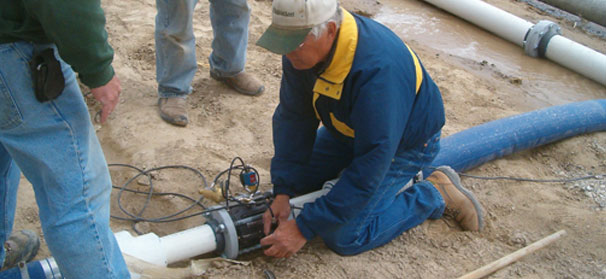

Jan 17, 2012Genome sequencing furthers knowledge of pathogen
The various species of bacteria in the genus enterobacter may be painfully familiar to you. Enterobacter cloacae, the best known of the genus, is a cause of various infections, including those of the lower respiratory tract, urinary tract, skin and soft tissues, wounds and all manner of other nastiness. This indiscriminate little bug is also a cause of bulb rot in onions.
To make things even trickier, Enterobacter cloacae is not a single homogenous species but rather a complex collection of speciated populations. Each species in the group is adapted to take advantage of whatever is available in its local environment.
“Genetically, the E. cloacae complex is very diverse,” said Brenda Schroeder, a plant pathologist at Washington State University who works on bacterial diseases of vegetable crops grown in Washington state.
“Individual bacteria populations have variations due to their response to local environmental conditions. That’s why we needed to sequence the genome of a local strain,” Schroeder said. “There is very little known about how E. cloacae infects humans and plants. It’s a pathogen of numerous plants, including ginger, papaya and macadamia. It’s also an opportunistic human pathogen. So contributing to the understanding of how this bacteria operates not only helps vegetable farmers, it also could potentially contribute to our understanding of human health.”
The impact on onion farmers is the immediate concern of Schroeder and her colleagues. According to the National Onion Association, Washington has more acres planted in onions than any other state. The state produces more than 1.3 billion pounds of onions a year, adding more than $150 million in direct farm-gate value to the Washington economy, with a total economic impact of around $1 billion per year to the state. Onions, in other words, are not small potatoes, and onion health is critical to the continued economic sustainability of many Washington farms.
Schroeder said that, among onion pathogens that cause bulb rotting, E. cloacae is the most commonly isolated.
“Over half of the time we see E. cloacae involved in bulb rotting. But we don’t know how it causes disease.”
Schroeder and her colleagues, post-doctoral scientist Jodi Humann and WSU School of Molecular Biosciences scientific assistant Mark Wildung, were able to sequence the genome of E. cloacae at WSU’s DNA sequencing facility for a mere $4,000. Schroeder pointed out that the E. cloacae genome is not very large compared to plants or humans, but the team also used some tricks to help drive the cost of sequencing down. Colleagues at the University of Florida, Eric Triplett and Jennifer Drew, shared their genomic data of another E. cloacae strain, which helped speed up the complex problem of figuring out what the raw data means.
Genome sequencing results in a soupy puzzle of genetic pieces. Some overlap, some begin where other chunks leave off. Sorting out the pieces and getting them all aligned is the computationally intensive part of a sequencing project. Fortunately, in addition to the data from her Florida colleagues and others, Schroeder was able to call on the assistance of WSU bioinformaticist Dorrie Main. Main set the team up with local copies of other E. cloacae sequences and online analysis tools to allow rapid comparison of individual genomes and genes, highlighting similarities as well as differences.
“Doing the sequencing work is a step toward a much more important goal,” Schroeder said. “Our lab is part of a big project that is developing tools that will allow us to identify bacteria pathogens by their molecular fingerprint.”
Fingerprinting disease-causing agents is important in understanding how they work.
“We really want to know what these microorganisms are doing,” Schroeder said. “We need the molecular window to get a view of how they interact as communities under various conditions – for instance, while onions are in storage.”
E. cloacae was only identified as an onion pathogen in 1991.
“We know that it doesn’t have a big arsenal of invasive weapons, of ways of causing infection. What we don’t know is what mechanisms are at work to cause bulb rot.”
At this point, there are more unknowns than knowns, but that situation is rapidly changing, Schroeder said.
“What we have here is a great window of opportunity for young scientists to solve some major problems and make some really key discoveries,” she said. “There is a real excitement in the scientific community about this and related issues. That’s why some of the best plant scientists in the country are all working together to meet this challenge.”
By Brian Clark, Washington State University














